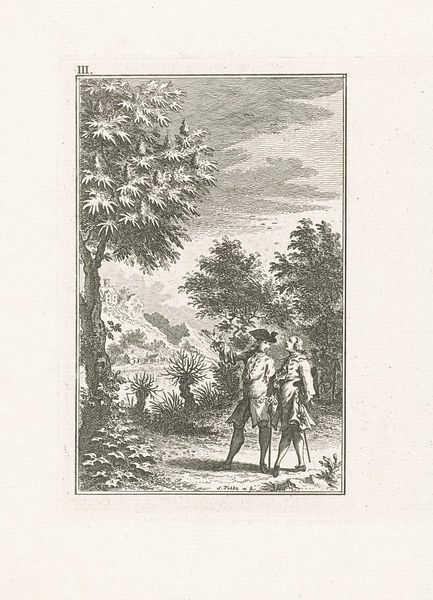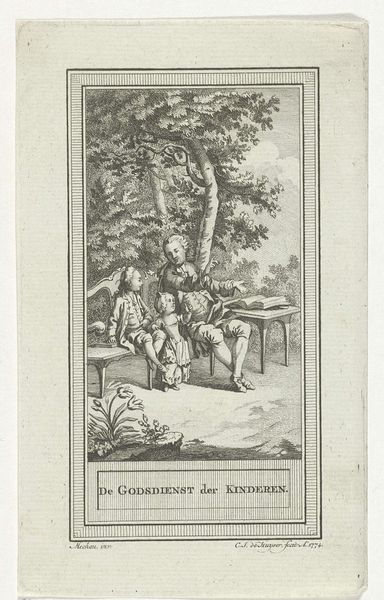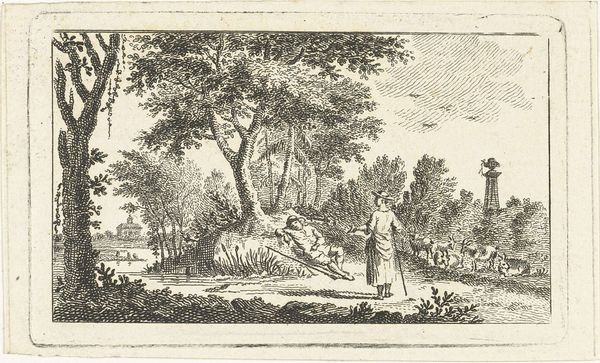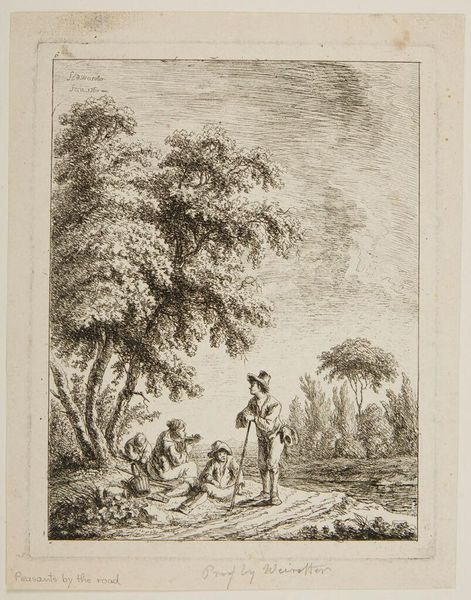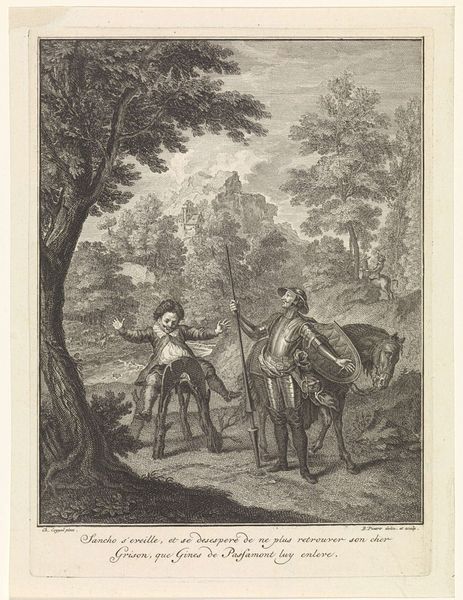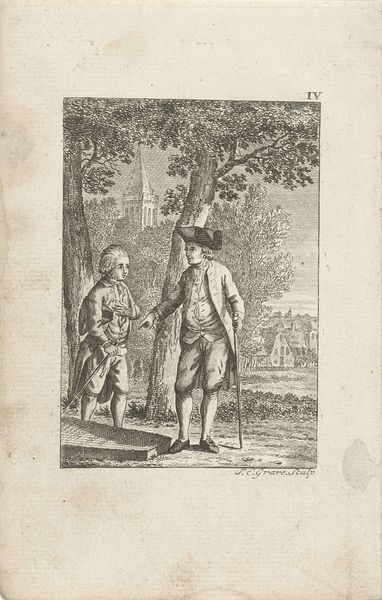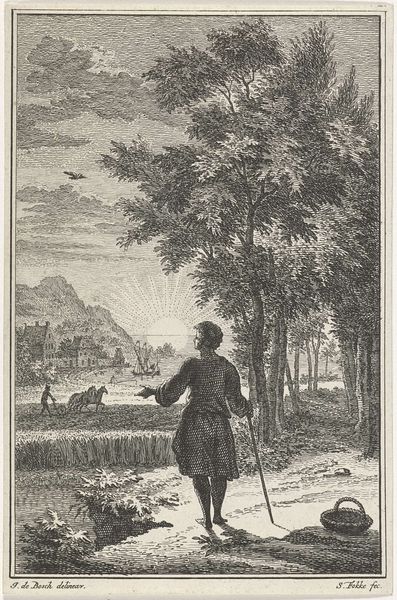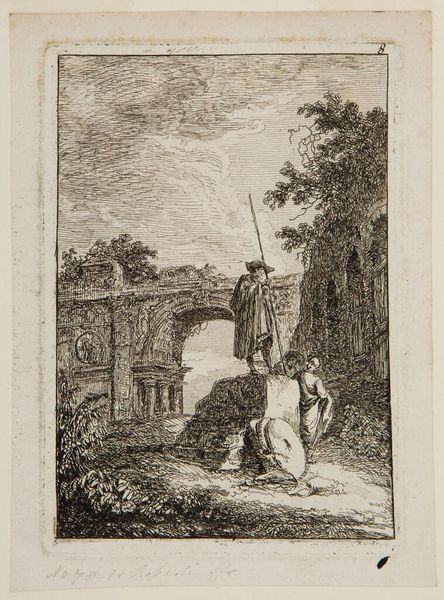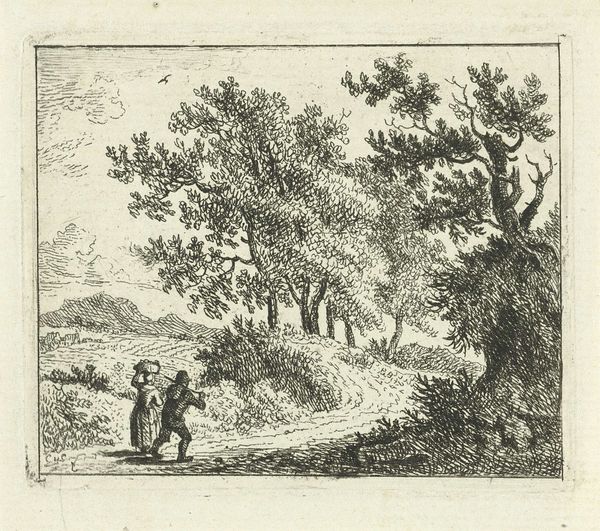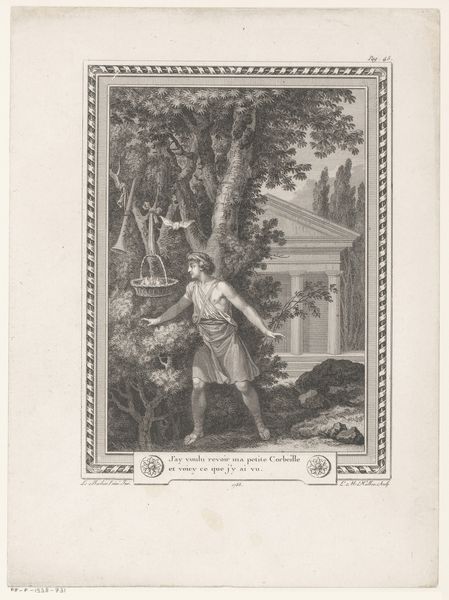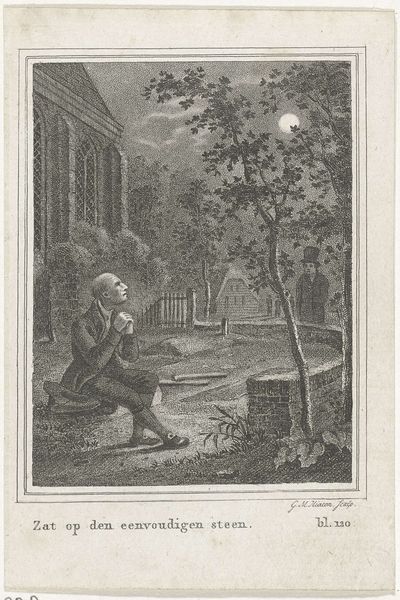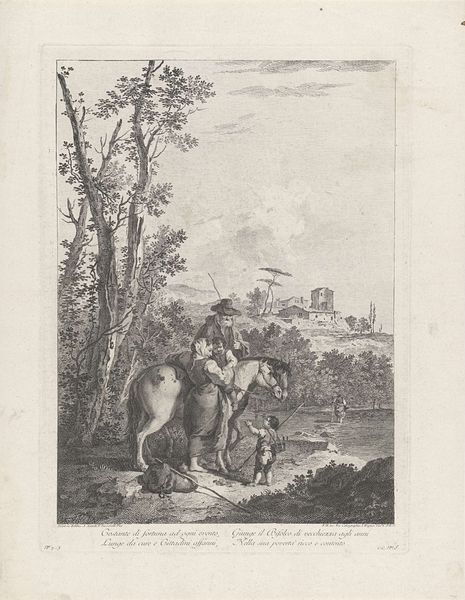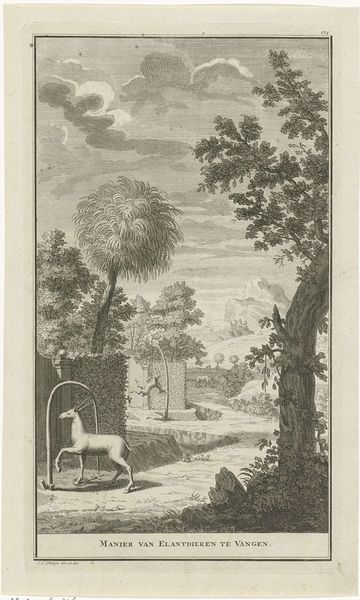
print, engraving
#
garden
#
baroque
# print
#
landscape
#
figuration
#
flemish
#
genre-painting
#
engraving
Dimensions: height 146 mm, width 118 mm
Copyright: Rijks Museum: Open Domain
Editor: This is Simon Fokke's "Man in a Garden," an engraving dating sometime between 1723 and 1784. It gives me this very composed feeling, like a carefully staged tableau. What are your thoughts when you look at this print? Curator: Well, I'm immediately drawn to the social context. These formal gardens were potent symbols of power and control in the 18th century. Look at the rigid geometry imposed upon nature; it speaks volumes about the elite's desire to dominate not only their land but also society at large. Do you see how the figure is almost part of the landscape design itself? Editor: I do now! He's posed so deliberately, almost like a statue among the other garden ornaments. Is that meant to tell us something about his status? Curator: Precisely! The print serves as a visual marker of class distinction. Owning such a garden, and being depicted in it, communicated wealth, taste, and social standing to a wide audience, thanks to the relatively accessible medium of printmaking. What do you notice about the implied audience or potential buyer for this image? Editor: Probably someone aspiring to, or already enjoying, that kind of lifestyle, maybe? Someone who wants to see themselves in this idyllic, controlled world. Curator: Exactly. It's a carefully constructed image designed to appeal to a particular social class, reinforcing their values and aspirations. The public role of art in legitimizing social hierarchies cannot be ignored. The Baroque emphasis on order translates directly into social and political messaging. Editor: I hadn't considered how actively these images shaped social perceptions at the time. It's more than just a pretty picture; it's a statement about power. Curator: Indeed! Thinking about the relationship between artistic representation and social structures adds so much depth. Editor: Absolutely. I’ll definitely be paying more attention to that in future artworks, considering who they were made for, and what values they were meant to project!
Comments
No comments
Be the first to comment and join the conversation on the ultimate creative platform.
